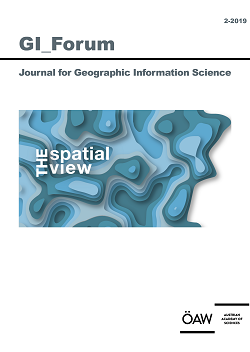 |
 |
Adrijana Car – Thomas Jekel – Josef Strobl – Gerald Griesebner (Eds.)
GI_Forum 2019, Volume 7, Issue 2
Journal for Geographic Information Science
Claudia Lindner,
Christina Müller,
Henryk Hodam,
Carsten Jürgens,
Annette Ortwein,
Johannes Schultz,
Fabian Selg,
Andreas Rienow
S. 153 - 162 doi: 10.1553/giscience2019_02_s153
Verlag der Österreichischen Akademie der Wissenschaften doi: 10.1553/giscience2019_02_s153
Abstract:
A new elective school subject called ‘Geography-Physics’ was developed by the Universities of Bonn and Bochum in cooperation with a German high school. With a focus on remote sensing, the modules of this STEM subject convey information, and present methodology and applications. There are two main sections: the physics of remote sensing, including both mathematics and computer science, and the geographic applications. GIS is a major part of the exploitation of Earth Observation data, but the use of GIS and EO data is not feasible in school lessons due to financial and time constraints. Instead, small specialized GIS tools with embedded EO imagery are used. The tools were developed by two projects, FIS and Columbus Eye/KEPLER ISS, and evaluation and meetings with experts were conducted in close cooperation with the partner school. The first 2-year course of the new subject was completed in summer 2018. The teachers implementing the course have since re-evaluated their concept and revised the syllabus to enhance applicability in professional contexts, to reduce redundancies with other subjects, and to ensure that the overall content fits into the allotted number of teaching hours. The pupils also evaluated the materials and the subject.
education, remote sensing, learning environments, ISS, e-learning Published Online:
2019/12/11 14:37:56 Object Identifier:
0xc1aa5576 0x003b17a2
Rights:https://creativecommons.org/licenses/by-nd/4.0/
GI_Forum publishes high quality original research across the transdisciplinary field of Geographic Information Science (GIScience). The journal provides a platform for dialogue among GI-Scientists and educators, technologists and critical thinkers in an ongoing effort to advance the field and ultimately contribute to the creation of an informed GISociety. Submissions concentrate on innovation in education, science, methodology and technologies in the spatial domain and their role towards a more just, ethical and sustainable science and society. GI_Forum implements the policy of open access publication after a double-blind peer review process through a highly international team of seasoned scientists for quality assurance. Special emphasis is put on actively supporting young scientists through formative reviews of their submissions. Only English language contributions are published.
Starting 2016, GI_Forum publishes two issues a Year.
Joumal Information is available at: GI-Forum
GI_Forum is listed on the Directory of Open Access Journals (DOAJ)
|




 Home
Home Print
Print
 References
References
 Share
Share
